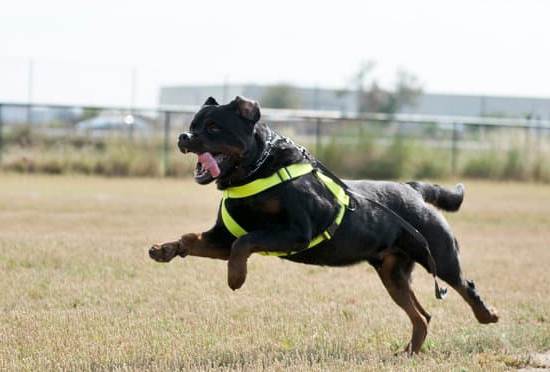Are you wondering how to train your emotional support dog to provide the comfort and companionship you need? Emotional support dogs play a crucial role in helping individuals cope with mental health challenges by providing unconditional love and support. In this article, we will delve into the various aspects of training an emotional support dog, from choosing the right breed to understanding the legal rights and responsibilities associated with having an emotional support animal.
Firstly, it is important to understand the role of emotional support dogs in providing comfort and companionship to individuals struggling with mental health issues. Additionally, we will explore the key differences between emotional support dogs and service dogs, highlighting the unique functions of each type of assistance animal.
Next, we will discuss the best breeds for emotional support and considerations for either adopting or training a dog for this purpose. We will cover important factors such as temperament, size, and energy level when selecting the right dog to fulfill your emotional support needs.
Lastly, we will address basic obedience training techniques for your emotional support dog. This includes teaching essential commands like sit, stay, and come using positive reinforcement methods. We’ll also examine the significance of socialization and exposure training in helping your emotional support dog become comfortable in different environments and reduce anxiety.
As you continue reading this article, you will gain valuable insights into establishing a strong foundation for your emotional support dog’s training while creating a supportive environment for their well-being.
Choosing the Right Dog for Emotional Support
When it comes to choosing a dog for emotional support, it’s important to consider the specific needs and personality of the individual who will benefit from the support. Different breeds have different temperaments and characteristics that may be better suited for certain individuals.
For example, while some people may benefit from the calming presence of a Golden Retriever, others may find more comfort in the loyalty and protectiveness of a German Shepherd. It’s essential to research and consider the best breed for the specific emotional support needs.
Additionally, it’s crucial to evaluate whether to adopt or train a dog for emotional support. While adopting a mature dog from a shelter can provide immediate emotional support, training a dog specifically for emotional support allows for customization based on individual needs. This decision should be made after considering factors such as time commitment, previous experience with dogs, and personal preferences.
When assessing potential dogs for emotional support, factors such as size, energy level, grooming requirements, and compatibility with other pets or family members should also be taken into account. These considerations can help determine which breed or individual dog is best suited to provide the necessary emotional support.
Finally, seeking guidance from professionals such as veterinarians or animal behaviorists can be invaluable in making an informed decision about choosing the right dog for emotional support. These experts can offer insights on how to train your emotional support dog effectively and provide additional resources to ensure that both you and your new companion have a positive and enriching experience together.
| Considerations | Description |
|---|---|
| Breed-specific traits | Evaluating which breed aligns with specific emotional support needs |
| Adoption vs. training | Weighing the pros and cons of adopting versus training a dog for emotional support |
| Additional considerations | Assessing size, energy level, grooming requirements, compatibility with other pets/family members |
Basic Obedience Training for Your Emotional Support Dog
When training your emotional support dog, it’s important to start with the basics. Here are some key aspects of basic obedience training for your emotional support dog:
1. Teaching basic commands: One of the first steps in training your emotional support dog is teaching them basic commands such as sit, stay, and come. These commands form the foundation for more advanced training and can also be helpful in certain situations where you need your dog to follow instructions.
2. Using positive reinforcement: Positive reinforcement techniques are essential when training an emotional support dog. This means rewarding your dog with praise, treats, or toys when they exhibit the desired behavior. This creates a positive association with learning and encourages your dog to repeat the behavior.
3. Consistency is key: Consistency is crucial when training any dog, including an emotional support dog. Make sure to use the same cues and rewards each time you ask your dog to perform a command. This will help reinforce the behavior and make it more likely that your dog will comply in various situations.
By following these tips for basic obedience training, you can effectively train your emotional support dog to become well-behaved and responsive to your needs. With time, patience, and consistency, you can build a strong bond with your furry companion while also ensuring they provide you with the emotional support you need.
Remember that each goodboy has different personalities and learning curves – some may take longer than others but with consistent patience and dedication, rest assured that gradual progress will be achieved on how to train your emotional support dog.
Socialization and Exposure Training
Helping Your Emotional Support Dog Adapt to Social Settings
Socialization is a crucial aspect of training an emotional support dog. This process involves exposing your dog to various social settings, such as parks, crowded areas, and different types of people. By gradually introducing your dog to new environments and experiences, you can help them become more comfortable and less anxious in unfamiliar situations.
Reducing Anxiety Through Exposure
Many emotional support dogs are tasked with providing comfort in times of distress. To prepare for this role, it’s important to expose your dog to different environments and people from a young age. By doing so, your dog can learn how to remain calm and offer support even in challenging situations. Exposure training can help reduce anxiety and fearfulness in your emotional support dog, allowing them to effectively fulfill their role when needed most.
The Importance of Positive Reinforcement
During exposure training, it’s essential to use positive reinforcement techniques to encourage desirable behavior in your emotional support dog. Rewarding your dog with treats or praise when they display calm and comforting behavior in social settings can reinforce these positive traits. This approach can also help build trust between you and your dog, strengthening the bond that is essential for effective emotional support.
By implementing socialization and exposure training techniques, you can prepare your emotional support dog to navigate various social settings with confidence and provide comfort when it’s needed most.
Emotional Support Specific Training
Techniques for Providing Emotional Support
Training your emotional support dog to provide emotional support in times of distress is crucial for their role. Techniques such as deep pressure therapy, where the dog applies gentle pressure to the body, or bringing calming objects when needed can be taught. Additionally, teaching your dog to pick up on your emotional cues and respond accordingly is important. This can involve training them to approach you when you are feeling anxious or distressed and providing comfort.
Recognizing Behavioral Signs
Understanding how your emotional support dog responds to different emotions is essential in their training. Recognizing when they are displaying signs of stress, anxiety, or discomfort can help you provide the necessary support and intervention. Additionally, being aware of their body language and behavior during times of distress will allow you to better assess their impact and effectiveness as an emotional support animal.
Therapy and Counseling Techniques
In some cases, professional help may be necessary for both you and your emotional support dog. Training them to become familiar with therapy settings and understanding how to behave around therapists or counselors can be beneficial. Moreover, incorporating calming techniques such as aromatherapy or comforting touch during therapy sessions can also aid in providing emotional support.
Understanding how to train your emotional support dog means recognizing that they may need additional assistance in fulfilling their role effectively. Continuing education and support for both yourself and your pet can make a significant difference in maintaining a healthy relationship and enhancing their ability to provide comfort and companionship.
Legal Rights and Responsibilities
As an emotional support dog owner, understanding the legal rights and responsibilities for having your dog in public spaces is crucial. Here are some key pointers on <strong>how to train your emotional support dog for public settings:
1. Know the laws: Familiarize yourself with the laws and regulations regarding emotional support animals in public places. Ensure that you understand your rights as an owner and the etiquette required when bringing your emotional support dog into various establishments.
2. Behavioral training: Socialization and exposure training are essential components of preparing your emotional support dog for public spaces. Introduce your dog to different environments, people, and situations to reduce anxiety and ensure they remain calm and well-behaved in crowded or unfamiliar settings.
3. Public access training: Teach your emotional support dog to behave appropriately in public spaces by practicing basic obedience commands such as sitting quietly under a table at a restaurant or walking calmly on a leash through a busy street.
Remember that every interaction in public will contribute to how others perceive emotional support animals, so it’s important that both you and your dog are prepared to navigate these situations with respect and consideration for those around you.
Obtaining an emotional support animal letter from a licensed mental health professional is also necessary to ensure that you have the right documentation when bringing your emotional support dog into public places. By being informed, proactive, and considerate, you can create a positive experience for both yourself, your emotional support dog, and those around you.
Creating a Supportive Environment
Once you have chosen and trained your emotional support dog, it is important to create a supportive environment for them at home. This involves setting up your living space to accommodate their needs and provide a comfortable and safe environment for their well-being. This can include providing a designated sleeping area, ensuring access to water and food, as well as creating a space where they can retreat if they feel stressed or overwhelmed.
In addition to the physical environment, creating a routine that supports the emotional well-being of your dog is essential. Regular exercise, mental stimulation, and bonding time are all important aspects of maintaining a supportive environment for your emotional support dog. Incorporating activities such as playtime, walks, and positive reinforcement training sessions can help strengthen the bond between you and your dog while also providing them with the necessary outlets for their energy and emotions.
It is also crucial to be mindful of your own emotional state when creating a supportive environment for your emotional support dog. Dogs are incredibly perceptive animals and often pick up on their owner’s emotions.
By practicing self-care, managing stress levels, and seeking out support when needed, you can create an overall positive atmosphere that benefits both you and your emotional support dog. Understanding how to train your emotional support dog goes beyond just teaching commands – it also involves creating an environment that fosters their emotional well-being.
Continuing Education and Support
In conclusion, training an emotional support dog requires dedication, patience, and ongoing education. Understanding the role of emotional support dogs and the difference between them and service dogs is crucial in choosing the right breed or selecting a dog for training.
Basic obedience training and socialization are important steps in preparing your dog to provide emotional support, but specific emotional support training is essential as well. Additionally, familiarizing yourself with the legal rights and responsibilities of having an emotional support dog in public spaces is imperative.
Once your emotional support dog is trained and certified, creating a supportive environment at home is vital for their well-being. This includes setting up a comfortable living space that meets their needs and establishing a routine that supports their emotional health.
Furthermore, continuing education and ongoing support for both you and your emotional support dog are essential for maintaining a healthy relationship. There are resources available for further training as well as educational material to help you better understand how to train your emotional support dog effectively.
Ultimately, having an emotional support dog can provide comfort and companionship in times of need. By following the guidelines for choosing, training, and supporting an emotional support dog-along with understanding your legal rights and responsibilities-you can create a strong bond with your furry companion while also benefiting from their emotional support when necessary.
Frequently Asked Questions
Can I Train My Own Emotional Support Dog?
Yes, you can train your own emotional support dog. However, it’s important to ensure that your dog is well-behaved, obedient, and suitable for the role of providing emotional support. Some people may choose to work with professional trainers or therapists to help train their dogs.
How Long Does It Take to Train an Emotional Support Dog?
The time it takes to train an emotional support dog can vary depending on the dog’s breed, temperament, and existing training. Generally, training an emotional support dog can take several months to a year. Consistent and patient training is key to successfully transforming a pet into an emotional support animal.
How Do I Turn My Dog Into an Emotional Support Dog?
To turn your dog into an emotional support dog, you’ll need to start by making sure your pet has basic obedience skills and is well-behaved in various environments. It’s also essential to get an evaluation from a licensed mental health professional who can determine if having an emotional support animal is beneficial for you.
Additionally, registering your pet as an emotional support animal may be required for certain privileges such as housing or travel accommodations.

Welcome to the blog! I am a professional dog trainer and have been working with dogs for many years. In this blog, I will be discussing various topics related to dog training, including tips, tricks, and advice. I hope you find this information helpful and informative. Thanks for reading!





